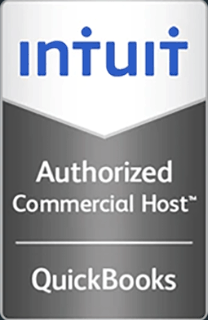Why are More Enterprise Organizations Virtualizing Mission-Critical Applications in the Public Cloud?
By Lisa Gecko
In the last few years a growing number of larger corporations and multinationals have moved a substantial percentage of tier two applications to the public cloud. The pay-as-you-go model of usage-based pricing provides an elasticity that is extremely cost-effective. This savings that the scalability and multi-tenancy of public cloud computing provide, is the main draw for all organizations to outsource to cloud hosting, and a driving force for the virtualization of tier one applications.
For enterprise organizations, the initial move to the public cloud has been a testing of the waters, and rightfully so. As the cloud has become a more well-defined environment, enterprise organizations are taking advantage of what public cloud hosting has to offer their mission-critical applications. In part due to a better understanding of security and more manageable hybrid cloud solutions, larger corporations are looking beyond the private cloud for tier one business solutions. The articles in this series will explore hybrid and public cloud computing today, and what they provide for multinationals as well as smaller companies.
Some organizations benefit from utilizing cloud hosting for business needs as simple as a software as a service (SaaS), while others eventually migrate to a complete outsourcing via infrastructure as a service (IaaS). Bookkeeping businesses for example are taking advantage of new QuickBooks hosting services that provide all of the advantages of cloud computing and a significant step up from QuickBooks online. While this is an example of SaaS, it is also an example of small to mid-sized businesses (SMBs) outsourcing mission-critical applications. For enterprise organizations to make the move to a public or hybrid cloud environment with tier one applications though, a few developments needed to take place.
Cloud service providers (CSPs) needed to be able to offer enterprise-grade security or better. As a few years have passed, it is now easier for the upper echelon of CSPs to demonstrate the superior security measures in place. With the government opening up the doors for private companies to offer cloud hosting to state and federal institutions this past year, security issues for big businesses have shifted from “why” to “why not?” After several federally funded studies cited that most CSPs were providing security that is equal to or better than current agency requirements, the Federal Risk and Authorization Management Program (FedRAMP) was developed to provide a standardized approach for government agencies to work with CSPs. This went a long way towards alleviating any security concerns regarding the public cloud in the private sector.
Hybrid cloud management needed to be a negligible aspect to hybrid cloud computing. Not too long ago it required hefty IT expertise to deal with hybrid cloud management on the user end, and they weren’t even responsible for the majority of the workload. With VMware vCloud Connector, more of the responsibilities and control have shifted to the end-user administrators with a sleek application that makes the management of virtual machines (VMs) in a hybrid environment much easier and less time-consuming. This is an important development for many reasons. For enterprise organizations that want to take the next step in outsourcing the virtualization of mission-critical applications, yet are still a bit wary of a permanent move to the public cloud, a hybrid cloud solution is the next logical step. The time-consuming maintenance and lack of control used to be an issue. This is no longer the case. With vCloud Connector, in-house administrators can manage VMs back and forth in the hybrid cloud with ease. This provides the opportunity for corporations to work on sensitive projects with third parties as well as get an idea of how cost-effective the scalability of the public cloud could be for the entire enterprise.
The security issues of storing data across multiple countries in multiple data centers on multiple machines needed to outweigh the security issues of consolidating data in the public cloud. This has actually always been the case, just not perceived that way by most until recently. For multinationals and other global enterprise organizations, the constantly shifting political tides in the multitude of less-than-stable countries around the world can wreak havoc on foreign data center access and security. Not to mention anything less than first world power grids. Having access to data from anywhere in the world via the public cloud is actually about risk avoidance, by eliminating global factors. This change in perception is one of the key reasons for moving tier one applications to the public cloud.
As cloud hosting is becoming an increasingly attractive option for enterprise organizations and their mission-critical applications, it is important for CSPs to express clearly what the advantages are, and also what some of the possible difficulties in outsourcing cloud computing can be. In the next article we will explore potential obstacles, and what enterprise organizations should expect from CSP security and services, as well as a more detailed explanation of the prominent advantages of hybrid and public cloud hosting.





